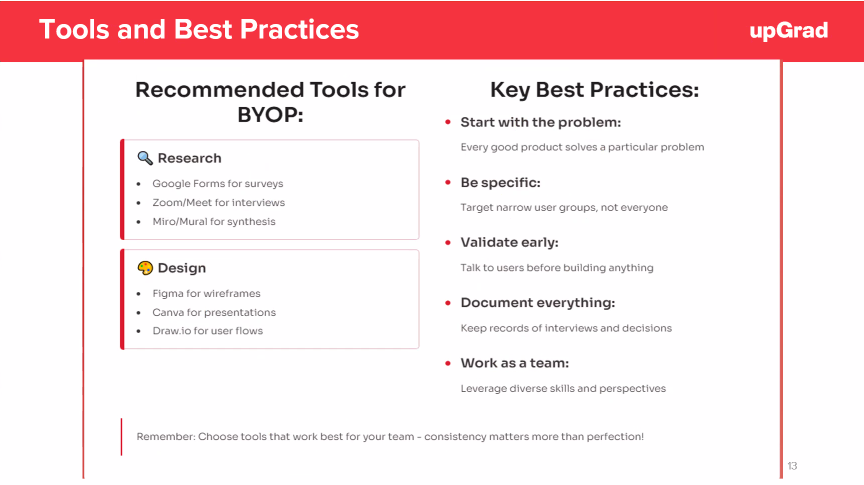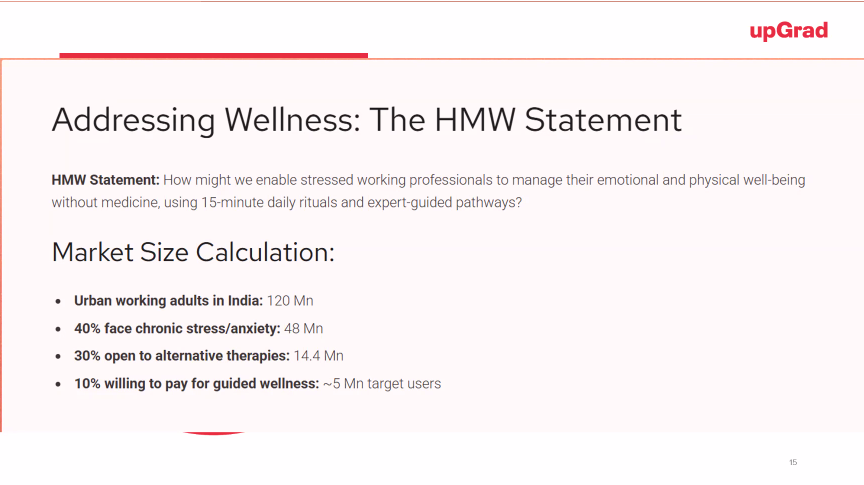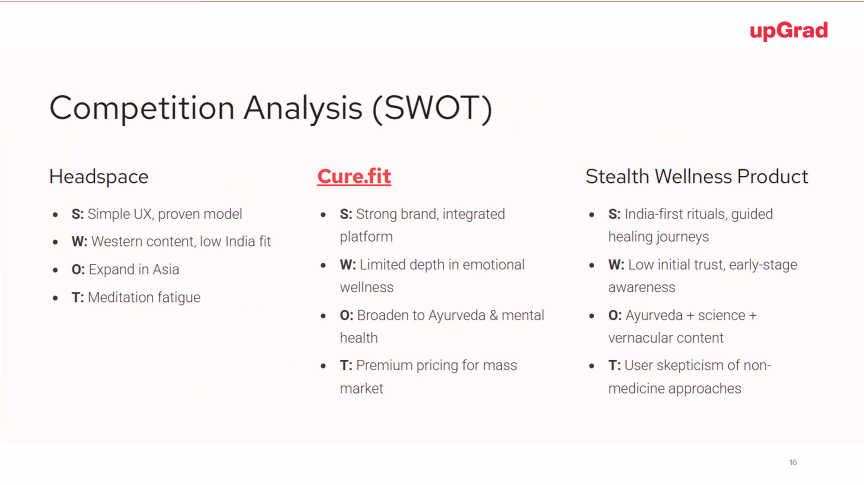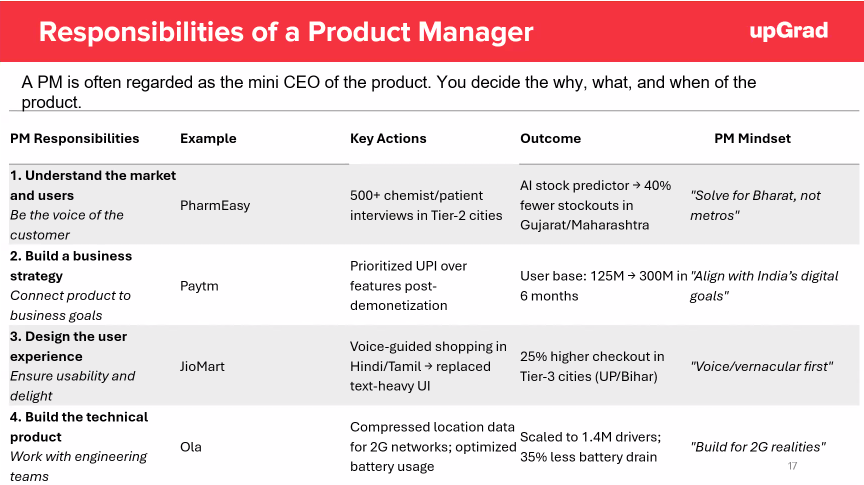Session Date: 2025-07-20 Instructor: Kumar Gaurav
Learning Objectives
- Value of building real prods
- Overview
- 8 core responsibilities of PM
BYOP Project Structure
- Course 1 - Understanding the User & Market Activities: Problem identification, user research, market analysis
- Product Design & Prototyping Activities: Sketches, wireframes, working prototype
- Product Development & Launch Activities: Development plan, features, tasks & subtasks
- Product Growth & Analytics Activities: Metrics, growth Strategies, video pitch
Note
As a PM, you won’t work on everything yourself - but you must know how to get everything done. This project builds that E2E understanding
BYOP Part 1
The breakdown of the overall tasks for the part 1 of the BYOP activity
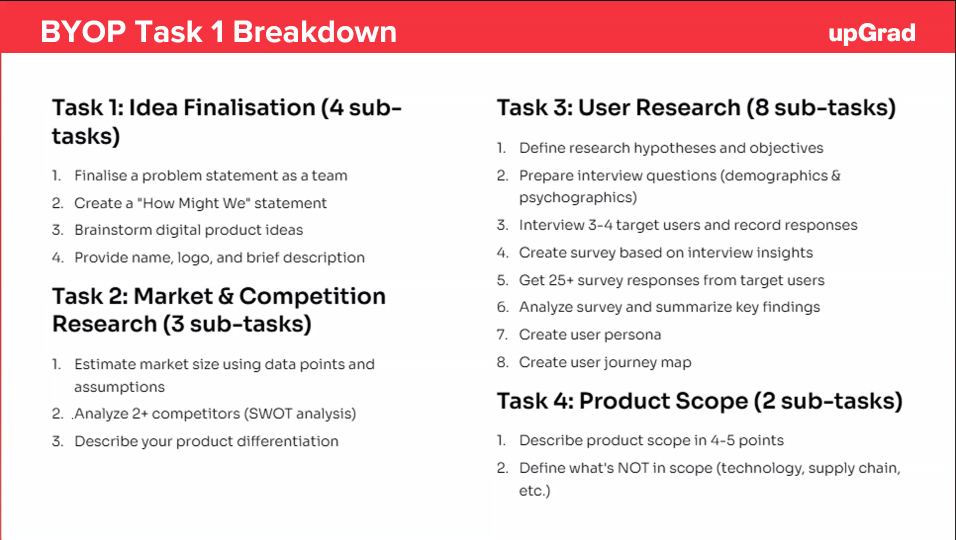
How Might We Framework
Info
How might we + enable {user group} + to {solve problem} + while {context}
Checklists
- Market size guesstimates
- Competitor SWOT - Strength, Weakness, Opportunity & Threats analysis that will need to be done
Activity - Breakout Room 4
Application for underprivileged child to help them learn quality education via mobile apps
How might we: How might we enable underprivileged children to help them attain basic education while their parents move search of work.
Name: e-Shiksha Description: An application to help children whose parents are migrant workers attain basic education offline.
Estimated market size: 29.4 million Product Differentiation: Prioritizing offline access
BYOP Part 2: Sketch & Prototype
- Sketching - The Foundation
- Begin by listing all the product freatures
- Brainstorm information architecture and user flow
- Sketch at least 10 different screens using pen and paper for initial concepts
- High Fidelity Prototype
- Create a computer based interactive representation covering all the product screens
- Use Figma or similar tools. Stick to black and white, using color only for highlights
Note
Always step into your user’s shoes. Focus on user interaction patterns and document all design decisions for clarity and future reference.
Overall ideas
- Decide the user flow - the user journey - how a user lands on the app and then navigates through it
- User journey of sign up :
- User logs in to the application
- User fills out the sign up form - name, email, age, address
- Clicks on sign up
- User’s mobile number & email is verified and they are taken to the app
- User journey of sign up :
- Sketch out the flow - you can use any wireframing tool for the same
BYOP Part 3 : Developing & Planning Your Product
- Epics
- What are the bigger deliverables that you want to do
- For example for a doctor app, the doctors features would be an epic
- User stories
- These are the epics that are picked up from the lens of the user persona and then put in to words
- Acceptance criteria
- This is what you want to achieve in the product
- This is useful for when the developer is developing the app and will want to see what are the things that they will need to work on
- For example - phone numbers to be genuine. The dev team will add in a feature for OTP verification
BYOP Part 4: Product Growth & Metrics
- North star metric - Identify one metric capturing your prod core value
- AARRR metrics - Identify 2+ metrics for each stage - acqisition, activation, retention, revenue and referral
- Growth strategies - Propose 2+ impr strategies per AARRR stage assuming metrics are below benchmarks
- Video elevator pitch - Create a compelling 1 minute pitch highlighting your prod USP and user value. Share on LinkedIn
Tools and best practices
